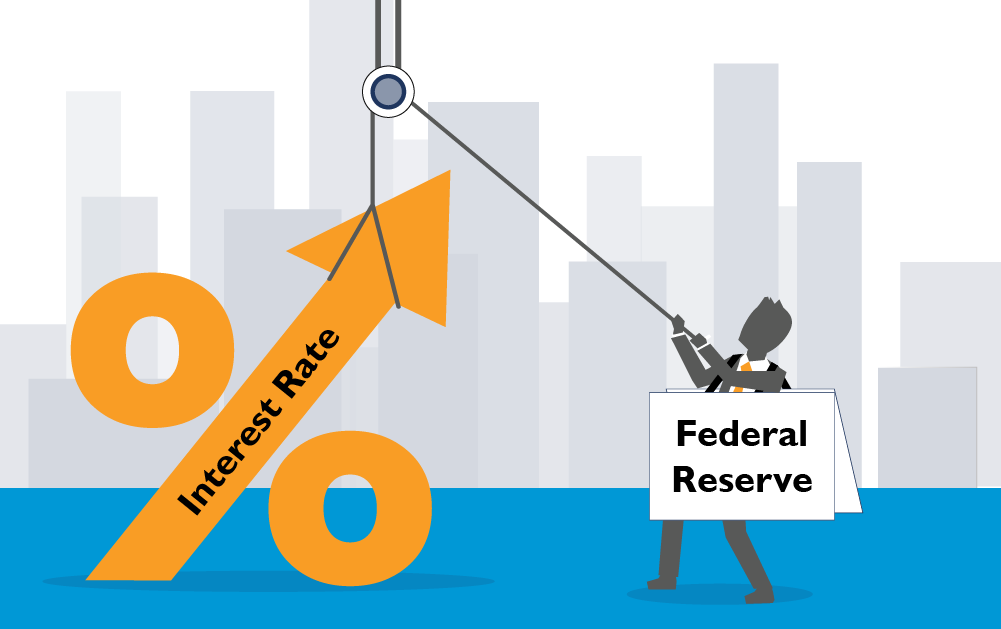
Understanding the intricacies of the mortgage market can feel like navigating a complex maze. One of the key players in this economy is the Federal decision, often referred to as the Fed. Its decisions reverberate throughout the financial landscape. Significantly affecting mortgage interest rates and, by extension, the housing market and broader economy. In this blog, we’ll explore how Federal Decision actions impact mortgage rates. And what influences those decisions, and the consequences of changing interest rates for borrowers and the economy at large.
The Mechanisms of Federal Reserve Decisions
To grasp the relationship between the Federal Reserve and mortgage interest rates, we first need to understand how the Fed operates. The FRD, as the central bank of the United States, influences monetary policy primarily through open market operations. The federal funds rate, and forward guidance.
1. Open Market Operations:
The Fed conducts open market operations by buying or selling government securities in the open market. When the Fed purchases these securities, it injects liquidity into the banking system, effectively lowering interest rates. Conversely, selling securities withdraws liquidity and can increase interest rates. This tool is critical for managing inflation and stabilizing economic growth.
2. Federal Funds Rate:
The federal funds rate is the overnight lending rate at which banks borrow and lend reserves to each other. This rate serves as a key benchmark for many types of loans, including mortgages. When the Fed adjusts the federal funds rate, it directly affects the cost of borrowing. An increase in this rate typically leads to a rise in mortgage interest rates, while a decrease can encourage lower mortgage rates.
3. Forward Guidance:
Forward guidance is the communication strategy the Federal Reserve employs to signal its future policy intentions. By clearly conveying its outlook on interest rates and economic conditions. The Fed can influence market expectations and behaviors. For instance, if the Fed signals that it intends to keep rates low for an extended period, lenders might keep mortgage rates lower as well.
The Direct Relationship Between Fed Decisions and Mortgage Rates
1. Interest Rate Hikes
When the Fed raises interest rates to combat inflation or slow economic growth. Mortgage rates do not immediately follow suit but tend to rise in anticipation. Lenders often adjust mortgage rates based on market expectations regarding future Fed decisions. When rates hike, borrowing becomes more expensive, which can cool off the housing market.
2. Interest Rate Cuts
Conversely, when the Fed lowers rates, mortgage rates typically decrease as well, making borrowing cheaper. This can spur demand in the housing sector. As lower rates enable homeowners to refinance their existing mortgages at better terms or encourage potential buyers to enter the market.
3. The Yield Curve and Mortgage Backed Securities
Mortgage rates are closely related to the yield on 10-year Treasury bonds, as these bonds are considered the baseline for risk-free investment. When investors expect the Federal Reserve to ease monetary policy, they buy Treasuries, pushing yields down and subsequently leading to lower mortgage rates. Conversely, when the Fed signals tightening monetary policy, yields can rise, leading to higher mortgage rates.
Factors Influencing Federal Reserve Decisions
The Federal Reserve’s decisions are shaped by various economic indicators and factors, including:
1. Inflation:
The Fed’s primary mandate is to maintain price stability, targeting an inflation rate of around 2%. When inflation exceeds this target, the Fed may raise rates to cool down the economy and curb inflationary pressures.
2. Employment:
The Fed monitors employment levels and strives for maximum sustainable employment. A strong job market can lead to wage growth and higher consumer spending, prompting the Fed to consider interest rate hikes.
3. Economic Growth:
The overall health of the economy, measured by indicators like GDP growth, consumer confidence, and business investment. Also informs the Federal Reserve’s monetary policy. Slow growth might prompt the Fed to lower rates, while robust growth might lead to rate increases.
4. Financial Market Stability:
The Fed also considers the stability of financial markets when making policy decisions. A stable financial environment is essential for effective lending and borrowing. Which are crucial for economic growth. If financial markets show signs of distress, the Fed may intervene to lower interest rates.
Consequences of Federal Reserve Decisions on Mortgage Interest Rates
1. Impact on Homebuyers and Existing Homeowners
The most direct impact of the Fed’s decisions on mortgage rates can be seen in the experiences of homebuyers and existing homeowners.
For Homebuyers:
- Affordability: Higher mortgage rates can make housing less affordable. A 1% increase in mortgage rates can significantly affect monthly payments. By making homeownership challenging for many potential buyers. For instance, on a $300,000 mortgage, a rise from 3% to 4% increases monthly payments by over $200.
- Market Dynamics: When rates rise, demand in the housing market often softens, leading to slower home price appreciation or even declines. Conversely, when rates fall, demand typically increases, leading to competitive bidding situations that can drive up prices.
For Existing Homeowners:
- Refinancing Decisions: Homeowners often look to refinance when interest rates decline. A lower rate can significantly reduce monthly payments or allow homeowners to leverage the equity in their homes for loans. Conversely, rising rates discourage refinancing, locking borrowers into higher-rate loans.
2. Impact on the Economy
The relationship between the Fed and mortgage rates also has broader economic implications.
Consumer Spending:
Mortgage rates directly influence consumer spending, particularly in the housing market. When rates are low, consumers are more likely to buy homes. Which can lead to increased spending on home improvements and related services. Conversely, when rates are high, spending in these sectors tends to decline, potentially leading to a cooling economy.
Construction and Real Estate Markets:
The construction industry is sensitive to changes in mortgage rates. When rates are low, demand for new homes often increases. Stimulating construction activity and job growth in that sector. Should rates rise, construction may slow, impacting employment and economic growth.
Influence on Investment:
Low mortgage rates often spur investment in real estate, with the potential for rising property values. As mortgage rates climb, real estate investment tends to wane, which can affect asset prices and economic confidence.
3. Investor Behavior
Mortgage rates also affect investors, particularly those in residential real estate and mortgage-backed securities (MBS).
- MBS Performance: As mortgage rates rise, MBS yields tend to increase, attracting investors looking for higher returns. However, if rates rise too quickly. It can lead to increased defaults, which negatively impacts MBS performance.
- Alternative Investments: Higher mortgage rates generally make other investment opportunities (like stocks and bonds) more attractive. Investors may shift their portfolios in response to changes in mortgage rates, which can lead to volatility in the financial markets.
Preparing for Federal Reserve Rate Changes
For individuals and families considering a home purchase or refinance, understanding the impact of Federal Reserve Decisions on mortgage rates is crucial. Here are some strategies for preparing for interest rate fluctuations:
1. Monitor Economic Indicators:
Staying informed about inflation rates, employment statistics, and overall economic conditions can provide insight into potential Fed actions. For instance, if inflation is trending upward, it might indicate a forthcoming rate hike.
2. Locking in Mortgage Rates:
Homebuyers can often lock in interest rates during the mortgage approval process. If you suspect that rates will rise, it may make sense to secure a rate lock, preventing an increase from affecting your mortgage terms.
3. Discuss with Financial Advisors:
Engaging with financial advisors or mortgage professionals can help you understand the current market conditions. And how best to approach your mortgage options based on Federal Reserve policy.
4. Consider Adjustable-Rate Mortgages (ARMs):
In an environment of rising rates, ARMs can be a viable option as they typically start with lower rates than fixed-rate mortgages. However, borrowers should consider the potential for future rate increases after the initial fixed period.
Conclusion
The Federal Reserve plays a pivotal role in the economy, and its decisions significantly impact mortgage interest rates. By understanding the mechanisms behind these rates and remaining aware of economic indicators. Prospective homebuyers and existing homeowners can make more informed decisions. As mortgage rates fluctuate with the Fed’s decisions, a comprehensive understanding of these dynamics will enable stakeholders to navigate the complexities of the housing market effectively. To ensure they remain agile and informed in a constantly evolving economic landscape.
Ultimately, the relationship between the Fed and mortgage interest rates is an intricate dance. Influenced by broader economic conditions, market expectations, and individual behaviors. Awareness and preparation can empower borrowers and investors. Allowing them to maximize opportunities and mitigate risks in their financial journeys.
Discover how Federal Reserve decisions impact mortgage rates, influencing homebuyers, homeowners, and the economy in this insightful blog.
QUESTIONS:
- How does the FRD influence mortgage interest rates?
The FRD impacts mortgage rates through its monetary policy decisions, which affect overall lending conditions and economic stability.
- What should homebuyers consider in a fluctuating interest rate environment?
Homebuyers should evaluate their financial situation, consider locking in rates, and stay informed about market trends and Fed announcements.
Read our blog




